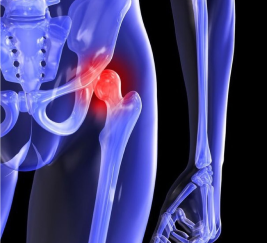Joints and Flexibility
To help explain this statement consider why the average golfer cannot play a consistent 18 holes or why a thinly built teenager can drive a ball further than a stocky stronger man? Many golfers will know the answer is ‘timing’ i.e contacting the ball with the sweet spot of the club head at the optimal speed. ‘Timing’ is heavily reliant on smooth, coordinated joint motion and hence any resistance from tight muscles and stiff joints is going to effect the timing of the swing. Which is why some golfers improve as they get warmer, others decline as they stiffen up, and a younger more flexible person can connect better with the ball than a stronger but less flexible person.
These same principles can be applied to all sports and explain why not only a more flexible person can perform longer and more consistently but why a less flexible person pushing them self to a high level is at great risk of injury.

Osteopaths use a variety of ‘hands on’ treatment techniques to improve your muscular flexibility and joint range of motion and they will assess and treat not only the area of pain but all those related regions which may have predisposed to the injury or are being affected by it. The benefit of seeing an Osteopath for a sporting injury is that they will identify the cause of the injury, which not only aids full recovery but also greatly reduces the risk of re-occurrence.
The most common sporting injuries our Osteopaths treat and manage are∶
- Ankle Ligament sprains/tears
- Shoulder tendonitis/impingement
- Knee ligament and tendon injuries
- Muscle strains/tears
- Chronic Hip/Groin/Hamstring injuries
- Rehabilitation of knee/ankle/shoulder reconstruction and arthroscopes
Osteopaths will generally prescribe for you the appropriate exercises to maintain joint range of motion and muscular flexibility and where required the relevant strengthening exercises also.






